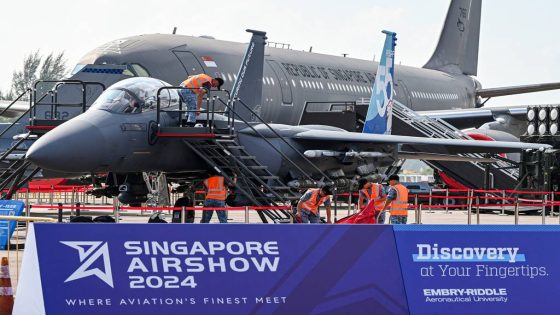SINGAPORE — The U.S. Andersen Air Force Base in Guam is set to open its doors to half of Singapore’s F-15 fleet, as the city state seeks to ramp up its combat readiness.
The move to concentrate air warfare capabilities at the remote American installation, located at the rim of the Philippine Sea, is part of a modernization plan proposed by the U.S. air service.
Over the past few years, North Korea has threatened a number of times to attack the small island, as was the case in 2017 when U.S. bombers took off from there to patrol the skies of ally South Korea.
“Andersen AFB is a strategic location used to project airpower and expand combat capability from the forward edge of the Indo-Pacific – our intent is to further resource this location,” a spokesperson for U.S. Pacific Air Forces (PACAF) told Defense News in an email.
“The purpose of the proposed action is to provide critical infrastructure that enhances U.S. posture west of the International Date Line,” the statement said.
The Singapore-related upgrades entail the bed-down and mission support of up to 12 Singaporean F-15SG aircraft, a variant of Boeing’s F-15 Strike Eagle, with plans to provide training facilities for pilots.
The changes, as detailed in a December U.S. Air Force statement, will also increase airfield and munitions infrastructure to address capability gaps and enhance how ground operations are carried out. The construction is expected to affect 209 acres and take place over a period of three to seven years.
There is currently no fixed date for when the work could begin. The Guam installation, one of ten bases under the authority of PACAF, is the only one in the western Pacific that can continuously overhaul American heavy bombers.
It is likely to have been selected by the U.S. Air Force for this project, as Guam is known to have a relatively unconfined airspace and has been deemed vital by analysts in the event of military action by North Korea.
Additionally, it is near the Farallon de Medinilla, a 1.75 mile-long (2.8 km) unoccupied island, used as a training bombing range from Andersen.
The U.S. air service “reviewed requirements for strategic capabilities within the Indo-Pacific region and identified Andersen AFB for enhanced capabilities, dismissing five other potential alternative locations within the Pacific Air Forces area of responsibility from consideration,” the PACAF statement said.
Singapore signed an initial $1.6 billion deal with Boeing in 2005 for the procurement of 12 F-15SG fighter aircraft, after which it ordered an additional 12 aircraft, resulting in a fleet of at least 24 fighters.
“The F-15SGs remain an important part of our fighter fleet – they have been serving us well since 2009 and they are expected to continue to meet our operational needs,” Maj. Gen. Kelvin Khong, chief of the Republic of Singapore Air Force, or RSAF, said in a statement ahead of the Singapore Airshow organized here from Feb. 20-25.
The RSAF has also been operating F-16s for several years, which began undergoing mid-life upgrades in 2016, as the city state plans to retire them from mid-2030 onwards and will soon receive its first F-35Bs from Lockheed Martin.
“The RSAF next-generation fleet will consist of F-35s and F-15SGs, and we expect to take delivery of the first four F-35Bs by 2026 and remaining eight in the following years,” Khong said.
The official added that the country plans to commence the training of its first F-35 pilots in the United States in order to enhance cooperation between the two nations’ fleets.
Elisabeth Gosselin-Malo is a Europe correspondent for Defense News. She covers a wide range of topics related to military procurement and international security, and specializes in reporting on the aviation sector. She is based in Milan, Italy.
Source Agencies


